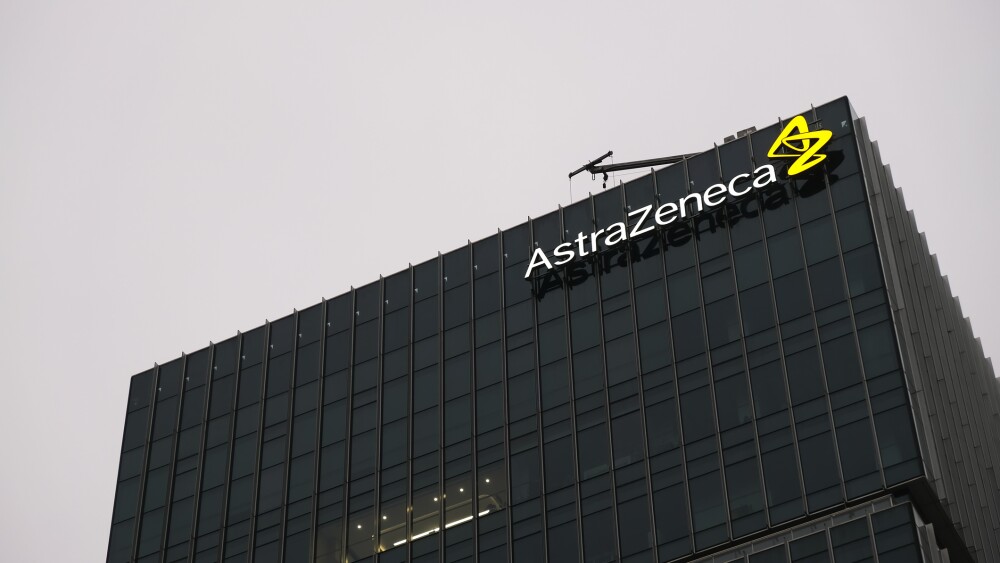Triebel holds the distinction of having discovered LAG-3 in 1990. Today, the company he founded is leveraging the handy molecule against cancer and autoimmune disease.
Immutep’s Frédéric Triebel (left) and Marc Voigt/Courtesy of YouTube
On March 21, cancer research took yet another step forward in a decade of new hope. In what was also a huge milestone for Bristol Myers Squibb, the U.S. Food and Drug Administration approved Opdualag, a LAG-3-blocking antibody combination, for the treatment of metastatic melanoma. But while BMS swung open the door to the newest validated checkpoint inhibitor, another company had already wedged it open.
Frédéric Triebel, M.D., Ph.D., is the CSO and CMO at Sydney, Australia-based Immutep S.A., which describes itself as the world’s only pure-play LAG-3 company. Triebel holds the distinction of having discovered LAG-3 in 1990. Today, the company he founded is leveraging the handy molecule against cancer and autoimmune disease. On March 30, Immutep announced interim data from a Phase II trial of lead candidate eftilagimod alpha, which is being assessed in combination with Merck’s pembrolizumab (Keytruda) in second line metastatic non-small cell lung cancer (NSCLC). The data spoke of an encouraging preliminary overall survival (OS) rate at the 6-month mark, with 73% of evaluable patients experiencing tumor shrinkage or tumor growth deceleration.
Triebel, along with Immutep CEO Marc Voigt, sat down with BioSpace to discuss the meaning of these results, and the future of the LAG-3 space.
“It’s a complicated setting,” Triebel said of second line metastatic NSCLC. “They’re already refractory patients, meaning that they have to wait for two subsequent scans at least four weeks apart, showing that they are progressing while they are still under PD-1 therapy. Then, they continue on PD-1, and efti (eftilagimod) is there to rescue the resistance to pembrolizumab.”
LAG-3 is generating excitement because the inhibition of this gene can make PD-1 inhibitors like Keytruda work in more patients. When the immune system develops a primary or secondary resistance to anti-PD-1 therapy, LAG-3 inhibitors like eftilagimod and Opdualag can ride in on a white horse and resume the battle. Which in this case, Triebel shared, appears to be happening.
“Here, we have seen responses in cold tumor patients, in tepid tumor patients and in hot tumor patients,” he said, pointing out that anti-PD-1 therapies have thus far shown more efficacy in treating hot tumors, which he referred to as “the easy ones.”
“When you see this many responses in cold tumor patients, this could not be due to pembrolizumab, and on the other hand, you show that there is a very good chance to rescue patients resistant to pembrolizumab.” Ultimately, this indicates strong potential for the combination to lead to more remissions in a difficult-to-treat patient population.
Immutep expects the official median results to read out in the second half of 2022. Whether the data ultimately shows that treatment with eftilagimod is superior to pembrolizumab alone, or non-inferior but significantly safer than additional chemotherapy, Voigt shared that “a minimum expectation is to see something in the range of existing standard of care, but at least being more tolerable.”
Also momentous for Immutep will be the publication of data for eftilagimod in first line non-small cell lung cancer in 140 patients. If the results are positive, Voigt said, “we can start to plan for late-stage development.” Immutep plans to unveil this data at an upcoming major medical conference during the first half of 2022.
Incidentally – or perhaps not incidentally – Keytruda was the first anti-PD-1 therapy to demonstrate a survival advantage in the first-line treatment of advanced melanoma. It was also the breakthrough indication for the first FDA-approved CTLA-4 inhibitor, BMS’s ipilimumab (Yervoy), in 2011.
“Melanoma is quite immunogenic, so it may not present what you will see in carcinomas,” Triebel explained, adding that even within carcinomas, there are differences. “Lung cancer is more immunogenic in general than breast cancer, for instance, and therefore, you have to go indication by indication. So whether LAG-3 will be open for cancer patients in general, this will take a few years” to determine.
Whatever the answer turns out to be, Immutep intends to play a big role in the experiment. Alongside NSCLC, eftilagimod is being assessed in clinical studies for metastatic breast cancer (Phase IIb), first line head and neck squamous cell carcinoma partnered with Merck (Phase IIb) and in various solid tumor programs in partnership with Merck, Pfizer and GlaxoSmithKline. Triebel shared that Immutep plans to present some biomarker data from the breast cancer trial at the upcoming ESMO breast cancer conference in Berlin, May 3-5.
On the other side of the pipeline, Immutep aims to break new ground using anti-LAG-3 therapies against autoimmune diseases.
“LAG-3 and PD-1 inhibit specifically T-cell receptor signaling into T-cells. Therefore, these checkpoints could be used in autoimmunity to silence autoimmune disease-specific T-cells with agonist antibodies,” Triebel explained.
This is what Immutep is working toward with IMP761, an agonist antibody that Triebel said took more than twenty years to isolate. “It’s not easy to find one. The agonist antibody has to push the right button on LAG-3 to induce, or increase negative signaling.” LAG-3 is known as an exhaustion marker, and it will only have an impact on T cells that express the protein complex T-cell receptor (TCR). “That’s how we directly target the few autoimmune disease sites that are accumulating at the autoimmune lesion.” This asset is currently in preclinical studies, but Immutep is ramping up GMP manufacturing and anticipates beginning a Phase I trial in 2023.
Triebel shared that the company plans to target autoimmune diseases like rheumatoid arthritis, in which inflammation is mediated by activated pro-inflammatory T helper type 1 (TH1) cells. He also gave the example of TH17 cells, which have more recently been implicated in the pathogenesis of autoimmune-mediated inflammatory diseases such as multiple sclerosis, psoriasis and again, rheumatoid arthritis – all huge therapeutic markets.
Immutep also boasts a robust out-licensed pipeline. In the autoimmune space, the company has licensed what it calls a “depleting antibody” to GSK. GSK’781, a depleting (cytotoxic) antibody, is intended to destroy LAG-3 expressing activated T cells involved in autoimmunity. The asset, which Triebel called a “unique concept”, has successfully completed Phase I studies – although a Phase II study was discontinued – in ulcerative colitis, and is also being assessed in psoriasis.
In oncology, Immutep licensed IMP701 (LAG525), which is designed to block the negative signal that may stop T cells from responding to the cancer, to CoStim Pharmaceuticals, now a fully-owned subsidiary of Novartis. The antibody is currently being studied in five Phase I and/or II trials in indications such as triple-negative breast cancer and melanoma.
LAG-3-focused companies like Immutep are benefiting from BMS’s breakthrough approval because it “makes it significantly easier for us to get the message across,” Triebel said – to investors, to big pharma, to the media and to cancer patients looking for a little more hope.
For the LAG-3 space in general, the newly validated checkpoint inhibitor will have to prove that it can stand up in indications besides melanoma. For Immutep, Triebel said, “I believe we have been showing very exciting data, and of course, we need to hopefully keep the promise,” in the data to come.






